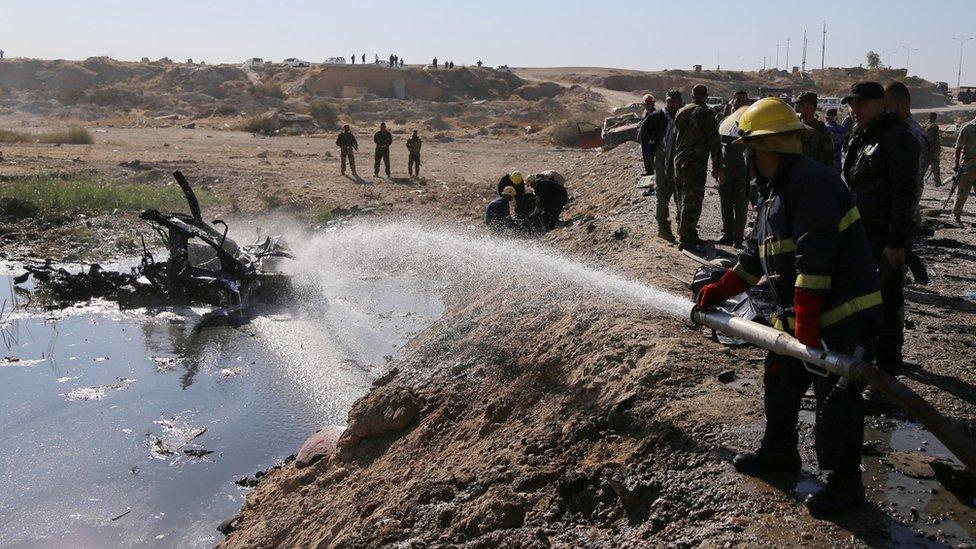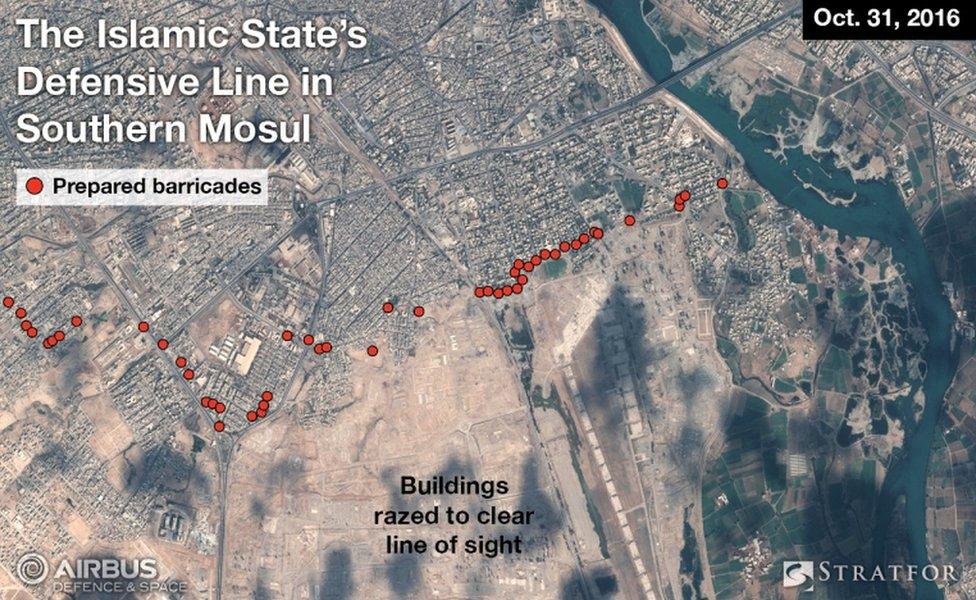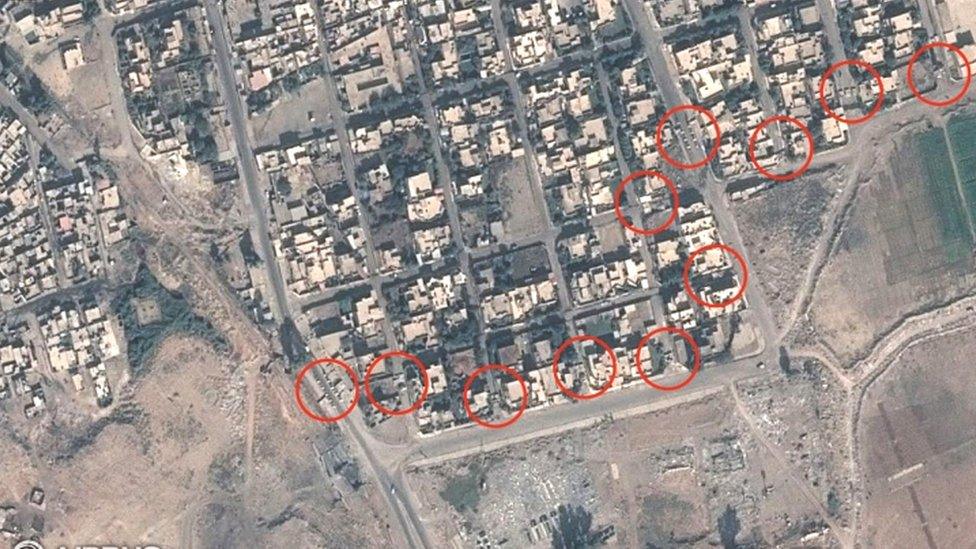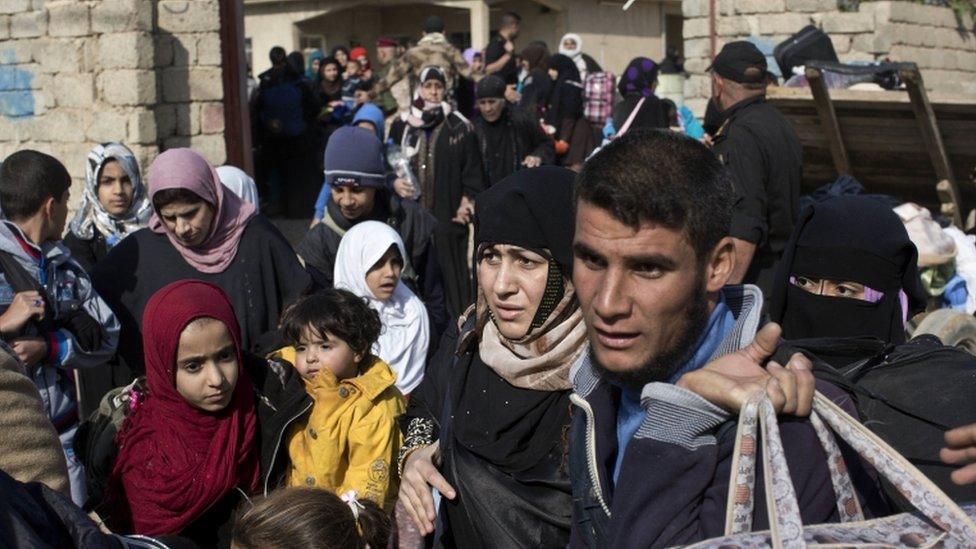Iraq suicide attacks: Ambulances used in Tikrit and Samarra
- Published

A mosque car park was targeted in Samarra, killing Shia pilgrims
Suicide bombers have used explosives-laden ambulances to kill at least 21 people and wound many others in the Iraqi cities of Tikrit and Samarra.
The so-called Islamic State (IS) group said it had carried out both attacks.
The attack in the holy city of Samarra targeted Shia pilgrims, including Iranians. A queue of vehicles waiting to enter Tikrit was also hit.
Further north, government forces continue to battle IS in Mosul, but deadly street fighting has slowed them.
They are facing fierce resistance as they push through the city's eastern and southern suburbs, blocked by concrete barricades and snipers on rooftops.
Slow progress
The deadliest of Sunday's blasts happened in Tikrit, some 200km (123 miles) south of Mosul.
A suicide bomber drove a booby-trapped ambulance into a line of vehicles queuing at a checkpoint at the southern entrance to the city, once the hometown of executed former leader Saddam Hussein.
The blast was so huge it blew some victims into a nearby river.

The scene of the blast in Tikrit

A queue of cars waiting at a checkpoint were hit
In Samarra, further south, another ambulance was detonated in a car park for the al-Askari mosque - one of the holiest shrines in Shia Islam. Iranian pilgrims were among the dead.
The number of dead and wounded at both attacks varies between reports.
BBC Arabic's Feras Kilani in Mosul, with cameraman Marek Polaszewski: "A large armed car drives packed with explosives drives directly into the convoy"
Iraq's special forces (CTS) have secured a foothold in the eastern districts of Mosul but have moved only a kilometre since Friday.
They are now pushing into more densely populated areas and have had to curtail air strikes in order to protect civilians.
CTS spokesman Sabah al-Numani said they were facing "the toughest urban warfare that any force in the world could undertake", with sniper fire from rooftops and IS militants using false flags of surrender to entice troops towards car bombs.
Satellite images show the erection of barricades on key routes. IS has also dug ditches, some of which have been filled with water.
The IS-linked news agency, Amaq, released images of destroyed government military vehicles.

Satellite images show IS barricades on key routes in Mosul and razed ground near the airport

Closer-up image of the line of barricades

Troops in Mosul are faced not only with battling IS but evacuating thousands of civilians
One resident of the Quds district told Reuters by telephone: "We still can't go out of our houses... mortars are falling continuously on the quarter."
Another resident in Malayeen district said IS fighters had set mobile homes ablaze to use as a smokescreen.
Government troops have gained control of Hammam al-Alil, about 15km (10 miles) south of Mosul on the Tigris river, despite fierce resistance.
Lt-Gen Raed Shakir Jawdat said security forces were in control of the centre of the town, but did not say whether IS militants had been pushed out completely.
Fighting is also continuing in Bashiqa, 13km north-east of Mosul.


Iraqi Prime Minister Haider al-Abadi, visiting the front line to the east of Mosul, said the government-led forces "will not retreat and will not be broken".
"My message to IS," he said, "if they want to save their lives they should lay down their weapons now."
Mosul fell to the jihadists in June 2014 and their leader, Abu Bakr al-Baghdadi, chose a mosque in the city as a place to proclaim the establishment of a "caliphate".
Before the offensive began on 17 October, there were believed to be between 3,000 and 5,000 militants remaining in Mosul, along with up to 1.5 million civilians.
